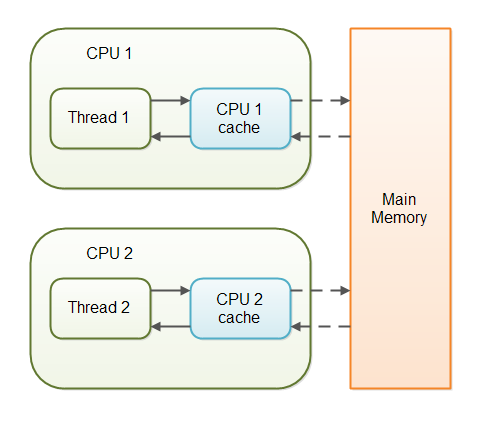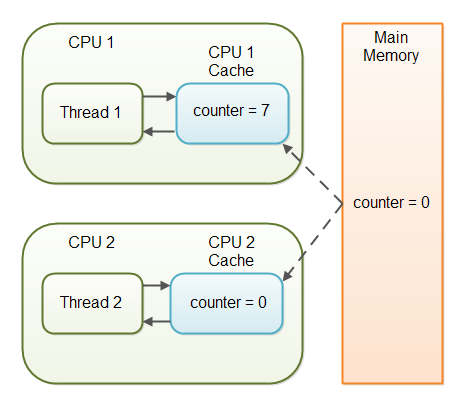Volatile Variable
volatile variables are stored in main memory and their changes are visible to all threads immediately.
- The volatile keyword prevents the CPU from caching the variable’s value in a local register or cache.
Atomicity - No guarantee
The volatile keyword does not guarantee atomicity for compound operations ( e.g., incrementing a variable, count++).
- It only ensures that the latest value of the variable is visible across threads.
- For atomic operations, additional synchronization mechanism or atomic classes (like AtomicInteger) are needed.
Guarantees Happens-Before
Writes to a volatile variable establish a happens-before relationship with
subsequent reads of that variable.
- This means that any write to a volatile variable happens-before any subsequent read of that variable, ensuring proper visibility and ordering of operations.
No Reordering: The Java Memory Model guarantees that reads and writes to volatile variables cannot be reordered with respect to other reads and writes to volatile variables.
volatile int sharedVar = 0;
public void task(){
...//All instructions WILL be executed before
read/write(sharedVar);
...//All instructions will be executed after
}
Implementation Details
Here’s how the volatile keyword is typically implemented:
Memory Barriers: The Java Virtual Machine (JVM) uses memory barriers (or fences) to enforce the visibility and ordering guarantees. These barriers prevent the CPU and memory subsystem from reordering reads and writes to volatile variables.
- Store Barrier: Ensures that writes to volatile variables aren’t reordered with preceding writes.
- Load Barrier: Ensures that reads of volatile variables aren’t reordered with following reads.
Also Check Shared Multiprocessor Architecture

| Other Variables | One Possible State |
|---|---|
 |
 |